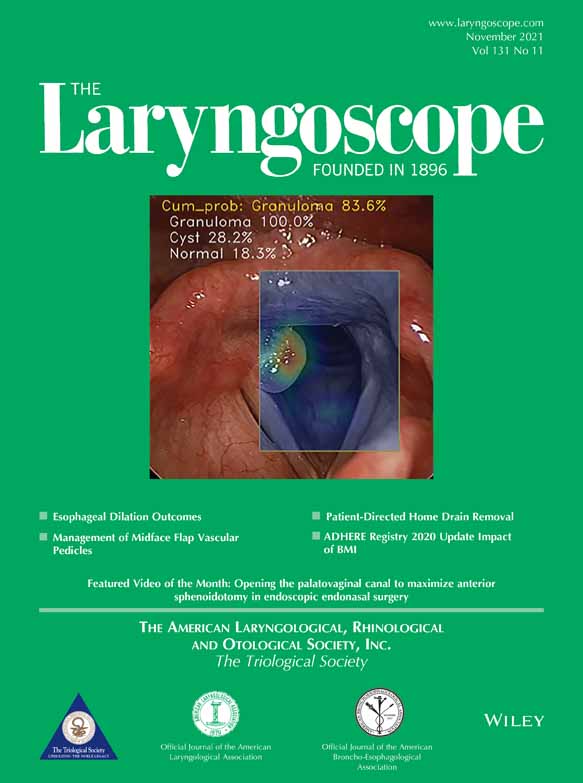Prediction of Speech, Swallowing, and Quality of Life in Oral Cavity Cancer Patients: A Pilot Study
Editor's Note: This Manuscript was accepted for publication on April 09, 2020.
This study was funded through departmental funds at Massachusetts Eye and Ear.
The authors have no other funding, financial relationships, or conflicts of interest to disclose.
Abstract
Objectives/Hypothesis
To investigate the impact of specific treatment-related variables on functional and quality of life outcomes in oral cavity cancer (OCC) patients.
Study Design
Retrospective Cohort.
Methods
Patients with primary OCC at least 6 months after resection and adjuvant therapy were included. Patients completed surveys including the Speech Handicap Index (SHI), M.D. Anderson Dysphagia Inventory (MDADI), and Functional Assessment of Cancer Therapy-Head and Neck (FACT-HN). Performance Status Scale (PSS) and tongue mobility scale were completed to allow provider-rated assessment of speech and tongue mobility, respectively. Additional details regarding treatment were also collected. These data were used to generate a predictive model using linear regression.
Results
Fifty-three patients with oral tongue and/or floor of mouth (FOM) resection were included in our study. In multivariable analysis, greater postoperative tongue range of motion (ROM) and time since treatment improved SHI. Flap reconstruction and greater postoperative tongue ROM increased MDADI and PSS (eating and speech). A larger volume of resected tissue was inversely correlated with PSS (diet and speech). Tumor site was an important predictor of PSS (all sections). There were no statistically significant predictors of FACT-HN.
Conclusions
In this pilot study, we propose a battery of tools to assess function in OCC patients treated with surgery. Using the battery of tools we propose, our results show that a surgical endpoint that preserves tongue mobility and employs flap reconstruction resulted in better outcomes, whereas those with greater volume of tissue resected and FOM involvement resulted in poorer outcomes. Larger prospective studies are needed to validate our findings.
Level of Evidence
3 Laryngoscope, 131:2497–2504, 2021




